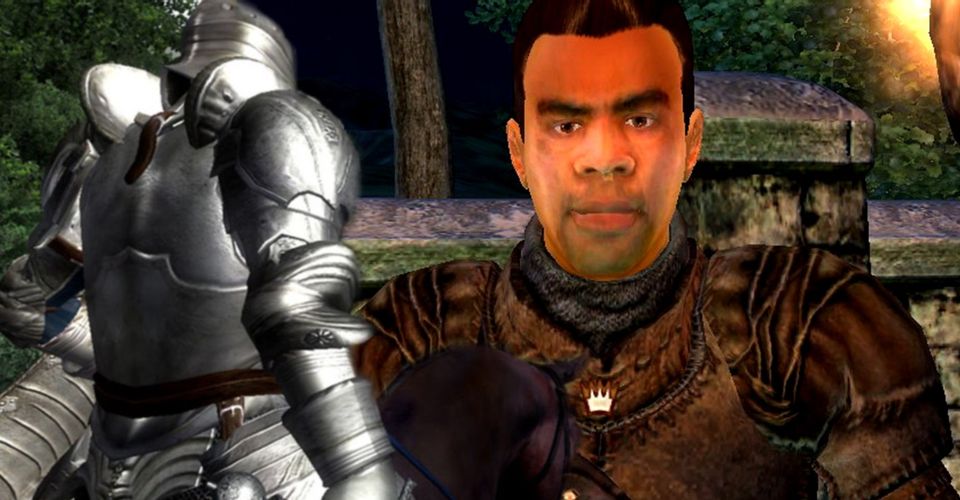Elder Scrolls: Why Oblivion’s Character Dialog Is So Bad

Following the mostly text-based dialogue of previous TES games in the series, The Elder Scrolls IV: Oblivion was the first entry in the Elder Scrolls franchise to feature entirely voiced dialogue and characters. While this was fine for quests, creating procedurally generated AI conversations at the time turned out to be more of a challenge.
Oblivion’s NPCs run off of the Radiant AI, a tool that was developed by Bethesda for Oblivion and later expanded when Skyrim was produced. Primarily, it manages AI interactions and behavior – what their goals are, who they talk to, and where they go at certain times. It allowed the world of Oblivion to feel lived in and active, as NPCs would continue with their routines even when the player was not around to see them.
While both Skyrim and Oblivion share the feature of NPCs having goals and schedules, only Skyrim includes predetermined conversations for its characters. Exchanges were written in advance, which is why players might hear the same conversation twenty times or so while walking through Whiterun. In Oblivion, the NPCs were given free reign to talk to whomever they encountered, and rather than writing out potentially hundreds and thousands of conversations, the AI would instead procedurally generate them by combining short bits of dialogue prompts and responses. While less repetitive than the conversations in Skyrim, at least on paper, this leaves Oblivion’s NPC conversations feeling patchworked and awkward.
Why Oblivion’s Conversations Don’t Sound Right

But that’s only part of the problem. While the use of Radiant AI in The Elder Scrolls IV: Oblivion explains the chaotic, disjointed conversations, it doesn’t explain the voice acting quirks. The miniscule number of voice actors in the game itself accounts for the repetitive sounding nature of its dialog, but not the line delivery itself. The voice acting in Oblivion is notorious for being either over-the-top dramatic or underwhelming, tonally dissonant with the topic of the conversation the NPCs are trying to have. As it turns out, there’s a good explanation as to why.
In an interview with Noclip, voice director Mark Lampert revealed one more crucial detail about why Oblivion dialog is the way it is: the voice actors recorded their lines in alphabetical order. This meant that they had virtually no idea what the context of any given line was. Each line was essentially treated as a standalone fragment of dialog that could be inserted into any conversation at random. With no good way to organize dialog lines in a more logical manner given the lack of experience in making a fully voiced game, as well as technical limitations, this caused difficulty in preparing the script.
In spite of its limitations and oddities, Oblivion’s NPC systems and conversations were ground-breaking at the time of its release in 2006, and even today many players look back on it fondly for all its flaws. Oblivion’s AI also laid the foundation for its more advanced usage in Skyrim later on down the line. Potentially, a further-developed and updated Radiant AI may even make an appearance in the Elder Scrolls VI, though it’s too early to know for certain.
Sources: Unofficial Elder Scrolls Pages, Noclip/YouTube
About The Author

















